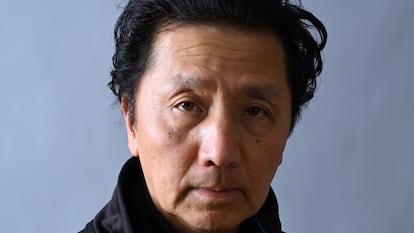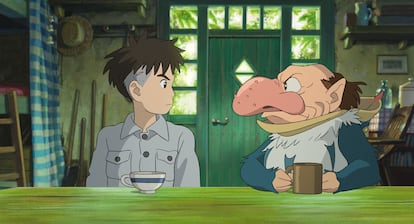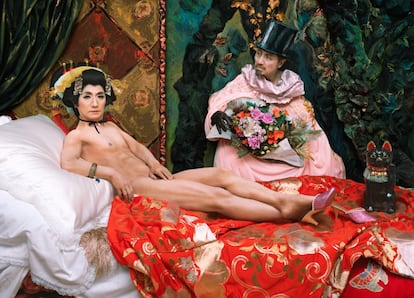
Japan: More than manga
Japanese culture mesmerizes the West by rejecting dichotomies and differences that may seem irreconcilable between opposites and suggesting their coexistence instead
Estrella de Diego
27 January 2024
For decades, manga has been gaining traction in European markets and has given rise to a thriving territory of fairs, passions, heroes, costumes, holograms… even fictional sexual relationships between people and fictional characters, such as the one between Akihiko Kondoy and virtual singer Hatsune Miku, until the company in charge disconnected her from its servers and some began to speak of Kondoy as “the first digital widower.” Perhaps manga fans intuit that metaspace of bends and apparent paradoxes... in which nothing is impossible, and we feel comfortable: it’s a space built on contradictions. Or at least they are contradictions for Western binary logic, which is now governed by some very unpopular dichotomies: male/female, white/black, full/empty, animate/inanimate, death/life... In fact, Japanese culture — including manga — offers infinite loopholes that allow us to never just be one thing forever. It suggests the pleasant coexistence of opposites: that which is no longer and that which has not yet ceased to be.
Such is the case in the animations of Hayao Miyazaki, whose The Boy and the Heron was released on the big screen this year. The film tells the story of young Mahito, who, immersed in nostalgia for his mother, decides to enter a place where the living and the dead coexist, where there are no insurmountable boundaries between them. It is the same negotiation of paradoxes that we perceive in the work of artist Yasumasa Morimura, one of the country’s most important artists and the curator in 2014 of the Yokohama Triennial, which had a title that needs no clarification: ART Fahrenheit 451. This Triennial is one of the most suggestive international events; in the spring of 2024, the eighth iteration will open: Wild Grass: Our Lives, the title of which comes from Chinese writer Lu Xun, a reflection on life after Covid. The event began in 2001 and has had artists as curators, including the Indian collective Raqs, presented at CA2M in 2014.
Morimura’s assault on binaries is astonishing. With similar ease, in his images, he occupies the roles of men and women; humans and apples, fish, flowers... the face of Manet’s Olympia, of his African maid, the body of Frida, the characters in Diego Velázquez’s Las Meninas, Van Gogh’s Sunflowers or the carp torn from a Japanese print. For Western culture, Morimura formulates a gesture as dramatic as walking through the world of the dead, even when one is alive. Moreover, does anything pose a clearer assault on the male/female dichotomy than kabuki? Viewers prefer to see Lady Macbeth played by a male star, as in Takarazuka theater — created by businessman and politician Kobayashi Ichizo in 1914 — all the roles were played by young girls who based their kata — formal patterns — on the positions and gestures of Marlon Brando in 1950s movies. It’s not a bad stereotype.

An image from Hayao Miyazaki's 'The Boy and the Heron.'
My Japanese friend barely smiles. One day he listened attentively to my explanation of Morimura and became interested in our readings and enumerations; categories, pigeonholing; divisions among fish, sunflowers, African maids, Frida and Velázquez. Such dichotomies do not exist in Japanese culture, or at least never in the way we understand them; there are no irreconcilable differences between the animate and the inanimate. Thus, Japanese culture hypnotizes us, although perhaps for the wrong reasons. It is only necessary, then, to determine the source of the West’s attraction to Japan from long before manga and even before the Impressionists and their collections of Japanese prints, like the one that appears in the background of Manet’s portrait of Zola.
Roland Barthes demonstrated that when he intuited during his 1970 trip to Japan that traveling there as a Westerner means being confronted with a text that has a lot of longing in it. In his The Empire of Signs, published after his trip, Barthes associates it with his experience of writing, a shuddering, he says; the satori — understanding in Zen — that the French philosopher believes has a lot to do with an earthquake. However, it is not — or is not solely — the shudder of the unfathomable or the impossible in the ultimate translation, but astonishment at a language where, despite the fact that each concept is governed by a precise sign, by Western logic, the meaning is an approach maneuver on a runway submerged in fog.
One could locate Japan’s irresistibility to the West in the fact that it inhabits the liminal and approaches what is barely intuited. The reader gets that feeling when reading Paris-based writer and food critic Ryoko Sekiguchi’s Nagori; it is one of the most exquisite books I have ever read. The plurisignificant word nagori serves as a guide for reflection on seasonal fruits and Japan’s different notion of time, among other things, because the seasons have a much more complex meaning there. Nagorirefers to nostalgia for the season that is ending, but also to the evocation of a house that no longer exists, as well as to what a person or object leaves in their wake when they depart. In other words, the word refers to the passage of flowing seasons, the subject of another very delicate book that Errata Naturae has just published: Inaba Mayuki’s The Peninsula of the Twenty-Four Seasons, which reflects the Japanese love for cats.

Yasumasa Morimura in 'A Modern Olympia,' based on Manet’s ‘Olympia.’ YASUMASA MORIMURA (CORTESÍA DEL ARTISTA Y DE LA GALERÍA LUHRING AUGUSTINE)
In 1926, Soetsu Yanagi reflected on the passage of time in his text “The Beauty of Miscellaneous Things,” collated in The Beauty of Everyday Things (Gustavo Giili, 2021). The zakki — ”miscellaneous things” — that accompany us on a daily basis become more beautiful the more they are used, and the more beautiful they are, the more they are used. Years ago, similar comments about the passage of time’s role in making objects more desirable enraptured us in Jun’ichirō Tanizaki’s In Praise of Shadows, announcing the eternal Japanese spell on our culture, from the pages of Nagori to recent manga fairs.
Japan does not enchant us by challenging our dichotomies. It seduces us by appealing to that mental space excluded from our logic, that of the satori, the ultimate and indispensable understanding; once revealed, we yearn for our rudimentary Western logical-linguistic tools to allow us to glimpse it, even in the “pocket version.” Moreover, now that our language aspires to break the old dichotomies regarding gender and we have waged a specific war on binaries by tracing multiple and open possibilities in definitions — we can add other denominations that arise to the term LGBTQ+ — I think of nagori, of how complex it is to translate the concept into our logic. I sense a certain linguistic failure in our determination to establish these categories of many non-binary gender options, although they are closed boxes with no way out: “cis”, “trans”, “bi”.... Despite everything, in their own way, they reproduce the reigning logic of Diderot’s encyclopedia: that everything in the world has a precise definition. The world in order: strawberries during the whole year.
“As one delves deeper into Nakahira’s visual work and essays, one thinks one is closer to understanding, but each time new questions assail us, what seemed so banal and trivial suddenly presents itself to us as something disconcerting and strange,” writes Dani S. Álvarez in his foreword to the Spanish edition of Japanese photographer and essayist Takuma Nakahira’s book The Illusion Called Documentary (2018). Welcome to Japan.


No comments:
Post a Comment